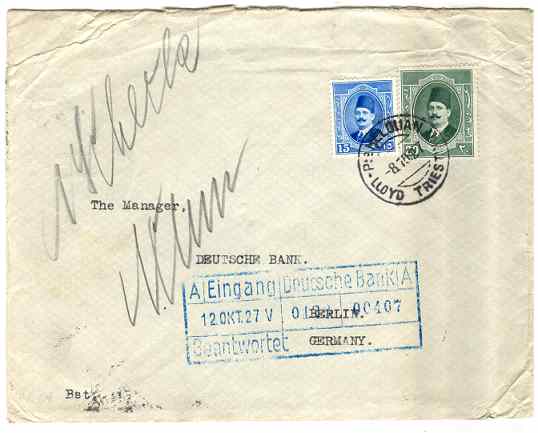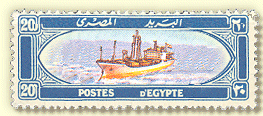All mail to foreign destinations, before the advent of air mail, was transported by sea, but sea mail here is considered to be any mail bearing markings suggesting that it has been posted on board ship, together with those establishments near the quayside dealing with mail arriving from ship or to be given to the ship's purser for onward shipment. This therefore includes not only non-Egyptian shipping lines but also postal items with stamps of other countries that have been posted at an Egyptian port.
In 1891 the Universal Postal Union introduced the paquebot convention for mail posted aboard before docking. The first markings to be used were the straight-line PLEINE MER handstamps, which can be found on mail from ships arriving/departing at Suez, Port Said and Alexandria.

The word Paquebot came into UPU use in 1899, and these markings were introduced from that year onwards for Alexandria, Port Said, Suez and Port Taufiq. Different types are found, either as a straight line or with the word in a long oval "cartouche".

By about 1914 circular datestamps were being produced containing the word PAQUEBOT. No such handstamp has been recorded for Suez, and perhaps one was never issued because Suez never developed into a major port for ships traversing the Canal.

Foreign sea posts of all the major maritime nations passed through the Canal, and Egyptian stamps can be found cancelled in their onboard post offices.


One of the interesting facets of the sea post study is the series of handstamps belonging to the Khedivial Mail and Engraving Dock Company. These are fairly plentiful, despite the prices in dealers' boxes, although most are philatelically produced. Many are addressed to Mr. F. Hendrey, or to other people but in the same handwriting, assumed to be Hendrey himself. Some are quite contrived but nevertheless without them some of these handstamps would probably never have been known about. Every Egyptian philatelist who has any sea mail will have a Hendrey cover or two.
|

